Herping for Snakes | Herping Tips in Southeast Asia
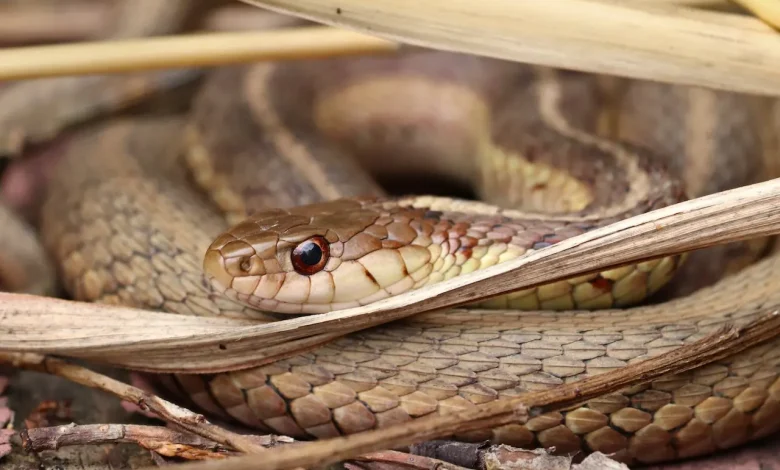
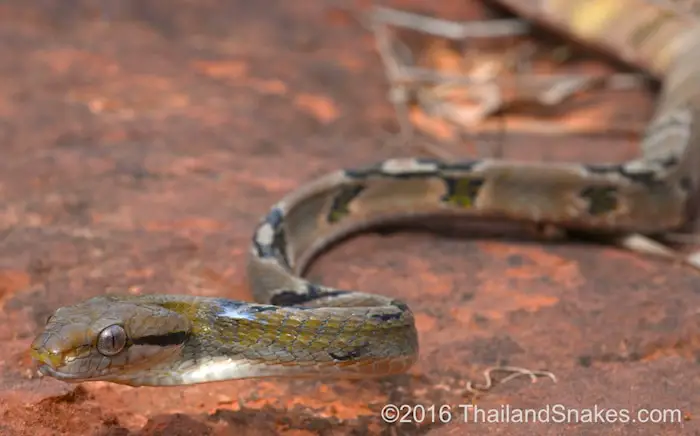
[Page Updated 22 June 2023]
Herping for Snakes | Tips and Tricks
I’ve been looking for snakes (herping) for about sixteen years in Thailand. I’ve herped with a few hundred people. Sometimes I picked up tips from them, but I certainly don’t know it all at this point.
If you have any tips to share in this article – let me know in the comments and I’ll add them in an update. These tips apply to all of Southeast Asia, but then maybe not be so generalizable to other areas of the world because the snakes are different from place to place.
That said, you might find some gems here even if you’re looking for rattlesnakes in Texas.
What is Field Herping for Snakes?
A Good Herping Headlamp is a Must
Besides having two eyes in your head, having a great headlamp is the most important tool you can have for herping for snakes. I went with cheap lights with high lumens for a couple of years, and was happy enough in my ignorance.
Then I herped with David Frohlich. He had a headlamp that lit up the entire forest. I saw a massive difference between that sort of light, and mine with a tight beam, and quickly went to work testing a bunch of flashlights and headlamps.
I now have a few favorites. They’re expensive, but there’s nothing I’ve found with the same quality of light or durability.
I love the reliability of Petzl headlamps. Professional trail runners, ultra-trail runners, use Petzl headlamps and recently an Acebeam H30 headlamp primarily.
Are Snake Tongs or Snake Hook Better for Herping?
Maybe not either. If you don’t have experience handling venomous snakes – please don’t touch any snake you are not very familiar with. By familiar with it, I mean you know what the snake is capable of.
That’s even a stretch… I don’t know what king cobras are capable of. I haven’t seen it all. I got surprised a couple years back by a king cobra hiding behind a log, and then launching itself up at the cage door. It nearly owned the guy I was with.
If you don’t know all the snakes you’re going to encounter – and know them WELL – please don’t be poking them with a snake hook or snake tongs. It’s a recipe for disaster.
If you are going to buy tongs – there are tons of absolute junk on the market. Get some of these originals which many companies are copying. These are gentle on the snakes and offer a safe grip
Which Is My Favorite Herping Headlamp?
Update January 2019 – Today my favorite headlamps haven’t changed. Same brand – Petzl. The PETZL ULTRA RUSH is the ultimate herping headlamp. It is pretty close to perfect. It’s expensive, but should last for 10 years or so.
Petzl Nao 2 – 575 lumens. It has a flood and a tighter beam I hesitate to call it a spotlight – it’s more of a condensed floodlight. It’s quite nice. The price is around $150. Petzl just released their successor to this light – and call it the Petzl Nao Plus.
I think it’s 750 max lumens. Battery life at maximum power – around the same. All of these are excellent headlamps that will give you years of use if you don’t abuse them too badly.
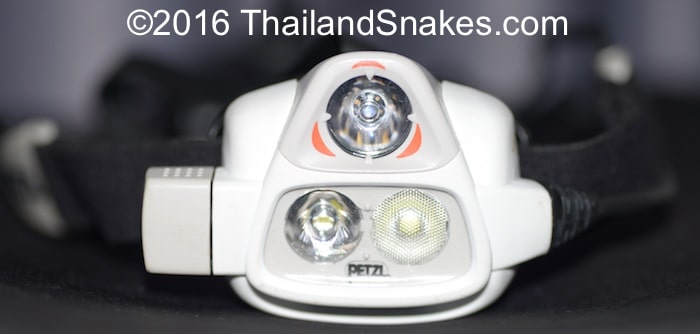
How To Find Snakes Quick?
If you just want to go out and find something in Thailand or SE Asia, I think your best chance is at night with a very good headlamp (torch, flashlight). So, hopefully, you’ve taken care of that above. It’s absolutely essential to be throwing enough light out there to get snake scales and even eyes reflecting back.
If I wanted to find a couple of snakes in an hour, I’d go to any hill that borders a road, and I’d scan the trees from 1 meter to 3 meters high for sleeping tree snakes – whip snakes.
Oriental Whip Snakes, Malayan Whip Snakes, Bronzeback Snakes, Golden Tree Snakes and others in the Genus. These snakes are really common in most places in Thailand.
You’ll see their venter (belly) reflecting light from underneath, or you can notice their different color against the green leaves they sometimes lay right on top of to sleep.
Once you find one sleeping, start looking at that same elevation off the ground for the rest of them, they’re probably at a similar height. I’ve also noticed that larger – full-grown adult Oriental Whip Snakes tend to sleep around the 2-3 meters and higher range.
The smaller snakes are from 1-2 meters high off the ground typically.
What Weather Conditions are Favorable for Snake Herping?
I see most snakes on nights in Southern Thailand when 3 conditions are present:
- Humidity. If the air is too dry – under around 50%, the chance of seeing a huge variety of snakes, drops considerably. Ideally, it’s 80-100% humidity, but not raining. If it’s raining, you’ll still see some snakes, but only a few species are seen regularly during rain.
- Heat. In Southern Thailand, we have what seems like an average night temperature during most of the year of 28-30°C. I see far more snakes when the temperature is over 28°C. That said, there are days when it is cool – 25C or so and there are still snakes out.
- Calm Winds. If it’s very windy, I see very little in the way of snakes, or anything else. I think the snakes go into the forest deeper to escape being tossed around on the branches as they sleep. I also think the blowing debris – leaves mostly – scares the snakes – puts them on edge, and they can’t relax. Just an idea… maybe?!
There are likely other variables that can add to what I have above, but I don’t regularly monitor anything else. Probably a falling barometer means you’ll find fewer snakes. If there is a full moon, you may find some snakes, and not others. I haven’t logged enough of my finds (only 100 or so) to the degree needed to figure out which snakes are found more often during certain moon phases.
I mentioned ‘heat’ in #2 above. If the temperature is only around 22°C at night you may still find snakes. Especially if the daylight hours were much warmer – and warmed up the ground, streets, rocks, etc.
There is probably a good range of temperature preference for snakes from the deep south, vs. Chiang Rai area in the far north. Here in Krabi, if it’s over 28°C, I’m much more likely to go out and see what I can find because I think the probability is higher to find a higher number of and variety of snakes.
I have had many amazing nights when the 3 factors above were present. I have never had a great night with low humidity, cool temperature, and strong wind.
Flipping Junk
Herpers across the globe flip over junk of all sorts and find snakes. I never do. No wait, I’ve found a gliding gecko, an E. enhydris, and a Brahminy Blind Snake. I’ve spoken with many people who’ve herped other areas of Thailand and Southeast Asia – and the reports are the same.
Few snakes found this way. Still, being from Western Pennsylvania, where we could turn up animals all the time like this – I can’t pass up a nice sheet of roofing or cardboard. Scorpions are typically under junk we flip here.
How to Herp for Snakes?
So, how does one actually go out and look for snakes?
Some people prefer looking on the ground. Some like looking up in the trees. Some like flipping stuff and raking leaves. Some like road cruising. I like all of these, but it really depends primarily on what I’m looking for.
I usually have an idea which snakes I’m focusing on for the night, so I can limit where I’m looking. It’s really tiresome to look everywhere – all habitat for snakes. Better to focus on 1-2 areas because you’ll last longer.
Tips for Looking for Snakes in Trees
This is quite easy once you learn what you’re looking for. It can be easy to pick out certain snakes by their shape. They are always curved – and tree branches are usually straighter and angular.
The colors of the snake can also stand out against green leaf backgrounds once you have it in your head what to look for.
I generally look between 1 and 4 meters up a tree for snakes. Some will be higher, but it’s tiring to check out the entire vertical height of a tree. Most will be in the lower branches, and you likely won’t be able to reach or identify anything very high up – so why bother looking up there?
How to Catch Snakes in Trees >
Tips for Looking for Snakes on the Ground
Snakes in the middle of the street, on a path, or sidewalk, are easy to see. Sometimes looking for snakes on the ground is easier than looking in the trees. When there is wide-open ground, I look there primarily.
When there is grass or other vegetation that would make spotting snakes difficult, I’ll tend to focus on the trees for sleeping or moving snakes (coming down the tree trunks).
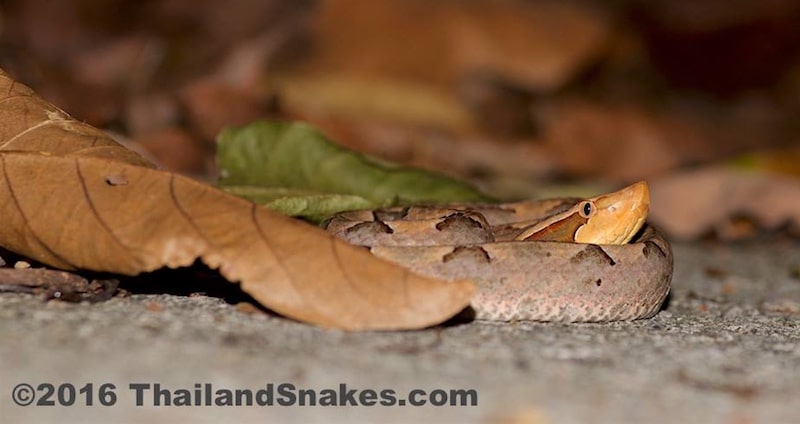
Tips for Looking for Snakes while Road-Cruising
Probably the easiest way to herp ever, is road-cruising. I like to do it from my motorbike. I’m faster off the bike and faster to get where I see a snake than in a car or other vehicle. I also can hear dogs coming or other cars – I’m just more aware while road-cruising on the scooter than in a vehicle.
I can sometimes block the snake from getting off the road if I pull in front of it too – with a car, the snake could go up into the engine and you’ll lose it.
Tips for Finding Snakes in Specific Genera
Where snakes are found differs quite a bit depending when you’re herping. I’ll give you tips for finding various types of snakes below during daytime and nighttime hours.
Cat Snakes
- Day – Hiding in the tops of palm trees. I know B. cynodon and B. dendrophila are both fond of sleeping in the palms about 5-6 meters up off the ground.
- Night – Mangrove cat snakes (B. dendrophila) come down to the ground around water and look for frogs where I herp. It’s a freshwater stream. They are also found in trees above saltwater, brackish water during the days and come down at night to find prey. Dog-toothed cat snakes (B. cynodon) can be found coming down palm trees, and crossing ground in dry areas or areas with water. I have also found this species crossing roads in hard rain at night. I’ve found them late at night – around midnight, most often.
Keelbacks
- Night – The triangle keelback (X. trianguligerus) is active at night, almost always in water, or in mud next to water, looking for frogs. They are light-sensitive, and will probably move when the light hits them. Their eyes can reflect slightly.
- Day – Red-necked keelbacks (R. subminiatus) are found in grass and other vegetation close to streams. The speckle-bellied keelback, common keelback, the blue-necked keelback, and others are all found within close proximity to water.
King Cobras
- Day – If hungry or mating, they roam a lot. In 14 years in Thailand I’ve only seen one king cobra crossing a road in daylight. One GIANT, but still… just one. But the juveniles can be seen on the roads in June or july as they hatch out.
- Night – I have found about half a dozen kings during daytime, and another half a dozen at night. I’ve seen a couple snakes that I was 90% sure were kings, but the visibility wasn’t good enough to call it. Hard to say, but then the keeled rat snake (Ptyas carinatus), the only other big black snake it might’ve been, is not known to be active at night at that hour (around midnight in one instance). Finding king cobras is hit or miss. You can’t really target them, except by just covering huge distances on the trails in the hills during the days.
More on how to find a king cobra in Thailand >
Kraits
- Day – I think the Banded kraits (B. fasciatus) sleep in the palm trees. I have heard stories of people bitten during the day while climbing up oil palms to collect the seeds.
- Night – Malayan kraits (B. candidus) are known to be very active at night. I’ve seen over 100 of them at night. They like limestone rocks, the edges of sidewalks, culverts, and they look into all sorts of little holes where other snakes might be hiding / sleeping. Banded kraits – not sure.
Kukri Snakes
- Day – I get quite a few requests to Identify kukri snakes crawling around the edges of people’s homes during the day.
- Night – I’ve only found a couple Oligodon at night sleeping just about 50 cm off the ground in heavy brush.
Monocled and Spitting Cobras
- Day – I see monocled cobras (Naja kaouthia) crossing the road during the hottest part of the day – around 3 pm. most often. It’s almost always within 30 minutes of 3 pm.! The spitting cobras? It’s a crap-shoot. Not sure anyone knows how to target them, but David Frohlich in Hua Hin has a place he finds them regularly.
- Night – I rarely find monocled cobras at night, and don’t know how to target them, but sometimes BAM, they’re just there.
Pit Vipers
- Day – Malayan pit vipers are in the leaves sleeping – sometimes on top, or under the leaves. They probably also sleep between rocks and in holes. I found one sleeping on my concrete porch, in the wide open one afternoon around 2 pm. No leaves on the porch – just one big pit viper outside the car door of my little daughter. She’d have stepped on it or in front of it if I didn’t notice.
- Night – Snakes in the Trimereserus genus sit in one spot waiting to ambush a frog, or skink. Malayan pit vipers can be very close to houses, or on hills with primary forest. They target rodents primarily, but will eat frogs.
Rat Snakes
- Day – I see them (Radiated rat snake, Red-tailed racer, Indo-Chinese rat snake) most often crossing roads – especially coming from water run-off areas of dirt – near palm plantations, and out of high grass. I’ve seen them chase lizards out of the high grass and onto the street a couple times. Ptyas carinatus I find on dirt trails in disturbed primary forest from 60 meters ASL to 300 meters ASL.
- Night – Radiated rat snakes I’ve found sleeping about a meter off the ground in sparse bushes. Red-tailed racers are 3+ meters off the ground and wrapped in a tight ball on trees. Ptyas carinatus have been found sleeping on bent bamboo 4-5 meters off the ground.
Reticulated Pythons
- Day – Found sleeping high up in trees, or in roofs of bungalows or other structures. I’ve also found them curled up in a ball on big tree stumps twice in the middle of the day.
- Night – Active on rainy nights whether it’s warm or cool. Can be seen crossing roads frequently after 9 pm. – especially when raining.
Whip Snakes and Bronzebacks
- Day – Whip snakes will typically be on a tree at around 2 meters high – open to the air. Meaning, a wide open space in front of the tree. They are targeting birds or lizards. I’ve also seen whip snakes on nature trails in the heat of the morning or early afternoon – just frozen there, waiting for me to step over them. I’ve found bronzebacks in trees in the same sort of position, and also on top of walls yards, and on thick branches close to the ground.
- Night – Very easy to spot in the trees sleeping. Typically 1-2 meters off the ground, but the bigger snakes (adults) will usually be found higher off the ground. Something weird – a few times (4) I’ve had these snakes jump out of trees at night in front of my feet. Apparently, the headlamp hits them and they freak out and jump.
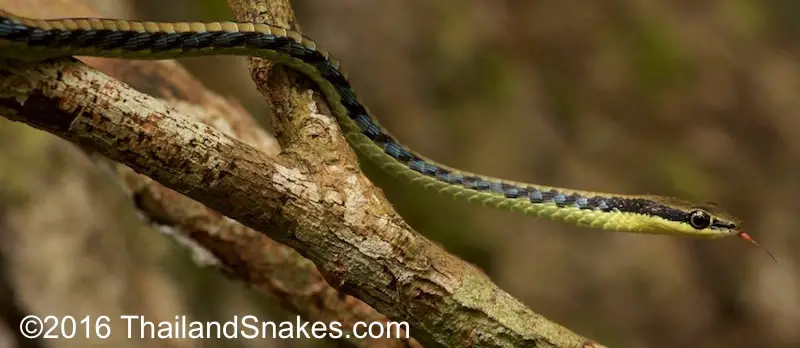
Wolf Snakes
- Day – Must be sleeping in trees (L. capucinus) and on the ground (L. laoensis).
- Night – Roaming around houses and bungalows on the edge of forest especially. Look for movement in and on top of leaf litter especially.
What Months Are Best for Herping Thailand?
This is an easy one. I catch far more snakes from May through November most years. I say most years because the weather varies wildly here in Krabi some years. This year, a week ago, we had serious flooding all over Southern Thailand. We never have heavy rain this late. So, snake season fluctuates a bit too. We’ll see how the next 4 months go and that may dictate the season a bit.
Here’s more info about the best months for herping in Thailand and some info about Things to Do in Krabi.
Herping in Rain info >

I wanted to send a couple of photos
Hi Alan, here’s our contact page – send there – cheers!
Contact
Hi Vern, I have a difficult question, but only difficult because I have very little info on a snake in the planter, next to the house, during the day. It was really skinny, like a wolf snake, but with a pattern on its back, that I just cant describe. It was more of a brown color, maybe 40, 50 cm long, and I Think, had diagonal yellow stripes on the underside of its neck, maybe three stripes. Didnt have a camera, and the wife and I have completely different ideas of what it looked like. I went through the snake pics, but didnt find anything close enough. I understand it this is not enough info for an ID.
Thanks anyway,
Tony
Mock viper? Common keelback?
Hey Vern!
Touring around SE Asia for a few months, mostly herping, and in Krabi right now – and will be for the next few days. My target species for Krabi is the Beautiful Pit Viper. Any suggestions on where I should start my search?
Many thanks,
Mark
Sorry Mark, just saw your comments now. Way too late. Should have contacted me by email.
Hi Vern, just in follow up to my question yesterday. I know I should have asked my question, re the beautiful Pit Viper locations, long before I arrived in Krabi, so if you are not able to respond before I leave that’s ok.
For a little about myself, I’m a life long herper (especially snakes) from Canada. I work seasonally in wildfire so I’m able to travel in the winter months and indulge my passion for snakesin tropical countries like Thailand. I’ve been to Thailand before, I volunteered at the Sakerat Environmental Research station for a few months. So quite familiar with Thailands snakes and have found around 20 species here but of course many to go. But again the beautiful Pit Viper is my target at the moment and would love to find one before I head south to Malaysia. So if you know of any trails or roads that have particularly good habitat I’d certainly love to have the tip!
Thanks,
Mark
Hi Mark, you can email me at the contact page.
hi. my problem maybe does not fit in here, but certainly I would be greatful for any suggestion: how to get rid of one wuite large golden tree snake, who moved over to our house. I spotted it a few fays ago first when it apoeared under the roof tiles. at that time did not really see the whole snske but today, noticed first a about 1m long empty snake skin hangin from the eaves of the roof, and at same time noticed the whole snake further up swalloving obviously a bird. our house is sk modern wooden thai house so there is a lot of secret spots for it to hide. Nobody was stYing in the house for 6 months so it obviously have had good time to settle down. hmmm but i rather hope it could go on living somehere else? Any idea how to get rid of this beautiful animal! very thankfull for sny suggestions.
Timo Tiivola
You could hang a bird cage from the roof with a dead bird or mouse – or live would work best if you don’t care – and make sure once he swallows the bird, he cannot get out through the slats of the cage. I’ve seen them caught like this by accident a number of times. Or, make a noose at the end of bamboo piece and pull it tight, but not too tight, around the neck – if you’re lucky enough to see it in the open. Toss in a garbage bag, seal it up, take it to another spot.
Hi,
Earlier today, my wife and I were, as per usual, out walking our dogs in the jungle in Phuket. The spot was the foot hills near Khao Pra Taew, it was good weather and the time was 4 pm.
In the middle of the walk, we stopped for a very short while because we were discussing something.
As we are talking I suddenly notice that 50 cm from my wife, there is a huge snake “standing” next to her!
His erect upper body and head is 80-90 cm above ground. He is what my mind register as solid grey, no patterns, no other colours, nothing. His mouth is closed, so no hissing heard and no fangs seen.
I tell my wife to start walking and she hears in my voice that something is wrong and immediately walks away with the dogs following her. I look back at the snake which is now completely on the ground, his body is as thick as the middle of my lower arm and somewhere between 220-250 cm.
I stupidly start running into the jungle away from the snake, I turn around after a second or two and notice that he is coming straight at me and much faster than me. I stop, “knowing” that he is going to bite me – but instead he continues on right beside me. He moved so effortlessly, almost as if someone was pulling him with an invisible string.
It was a very scary and strange meeting, even for a snake lover as myself. Why was he “standing” next to me and my wife? Why didnt he bite any of us? Why didnt our dogs notice a huge snake just two feet away? Why didnt the snake leave before we got to where he was? He must have heard, sensed two dogs and two humans coming?
And what kind of snake was it? I have been super lucky to have seen Burmese pythons in Phuket a few times, well two actually. I have also seen what I assume must have been King Cobras a few times.
I would love to hear your thoughts on this encounter.
Hi there, thanks for the story. There are few grey snakes that might stand up like that, and none that fit your description exactly, so something might be a bit off.
Ptyas korros – a rat snake, is a possibility. They get 2+ meters, but never as thick as a forearm. 3-4 fingers in thickness – max.
Ptyas carinatus – a rat snake. They get that big and thick. Are fast and strong and fluid. Could be considered grey if in shed – typically black or brown.
Naja kaouthia – monocled cobra. They can possibly reach 2m, but I’ve only seen one that large in 11 yrs of looking – including seeing hundreds at the local snake show. Could it raise up 1m high? No.
Naja sumatranus – spitting cobra. I think Phuket has them, and it could possibly be greyish – maybe in shed. Not over 2m, but can be thick as a forearm.
O. hannah – king cobra. Never saw a grey one. Saw black ones. They get that long and that thick. It could stand up 1m high. It likely would not move as fluidly as you describe. If 2.5m long, it wouldn’t be as thick as a forearm either.
So, hard to say. I’d guess you saw one of the the rat snakes I listed first. I’m not sure P. carinatus is found on Phuket though.
Hi
Where can I find a course in how to handle snakes in thailand?
Meaning how to find them, how to pick then up etc…
Thanks
Lars
There is no such course. Some people go to the snake shows and ask them to show them how to handle snakes. This is a bad idea, as they don’t often use the safest procedures.